Ozone flux
Ozone is a strong plant toxin. Fumigation experiments with young forest plants, in which the IAP was involved, enabled the UNECE to specify critical levels based on concentration sums (AOT40, hourly values above a threshold of 40 ppb) and ozone uptake through stomata (PODy, phytotoxical ozone dose with a threshold of y nmol/m/s). The critical level for forest ecosystems based on AOT40 is 5 ppm/h. The critical levels for PODy are different for beech and spruce trees. For beech, it is 4mmol/m² and corresponds to a growth reduction of 4%. For spruce, it is 8mmol/m² and corresponds to a growth reduction of 2%.
Here you find the actual ozone flux at our measuring stations.
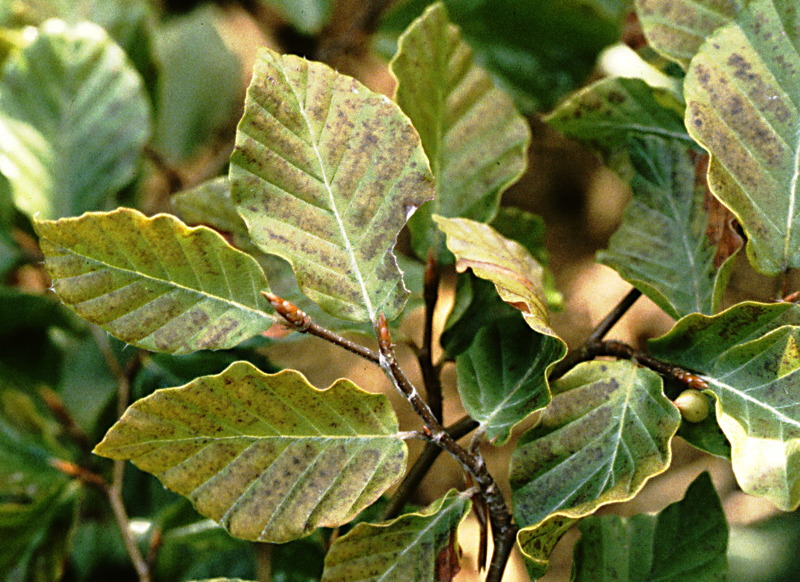
Ozone injury on a beech leaf.
In Switzerland, in forest with ≥10% broad-leaved trees estimated ozone uptake is 13.5 mmol/m² which corresponds with a growth reduction of 13.5%. In forest with ≥10% coniferous trees, estimated ozone uptake is 25 mmol/m² corresponding to a growth reduction of 6.3%.

Ozone dose response curve for fumigation experiments with birch (Betula pendula) and beech (Fagus sylvatica).
Left: Relationship with AOT40.
Right: Ozone uptake according to Mapping Manual (UNECE 2010) and threshold value 1 (POD1).
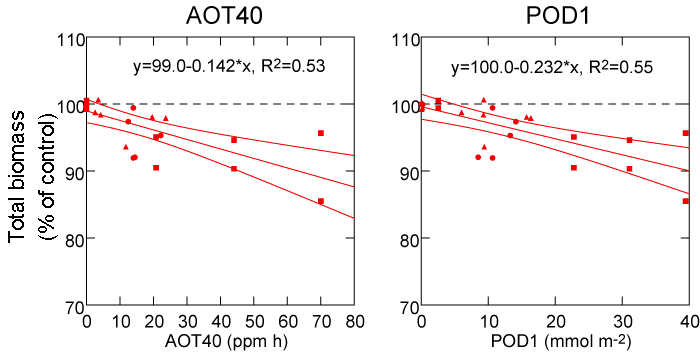
Ozone dose response curve for fumigation experiments with spruce (Picea abies).
Left: Relationship with AOT40.
Right: Ozone uptake according to Mapping Manual (UNECE 2010) and threshold value 1 (POD1).
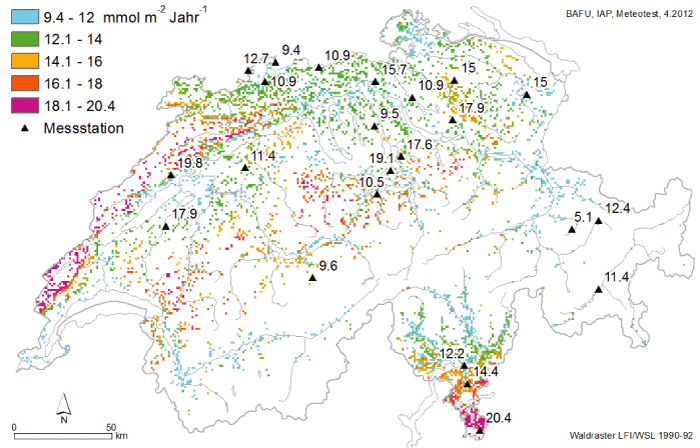
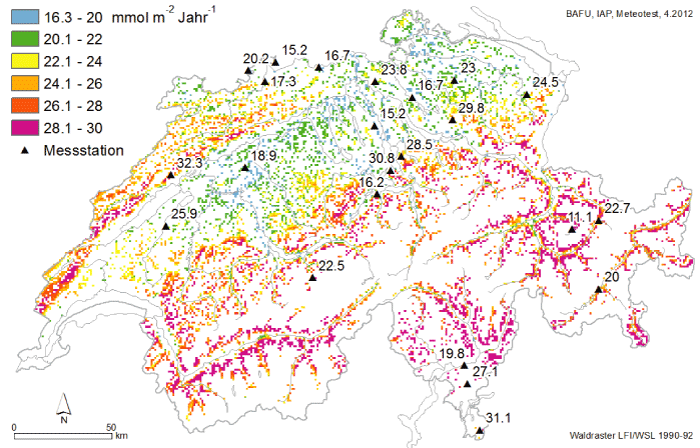
Ozone uptake of beech (left) and spruce (right) in Swiss forest sites with at least 10% broad-leaved trees.
The mapped ozone flux values were calculated without soil moisture. The critical level for birch and beech is
4 mmol/m², for spruce 8 mmol/m².
Ozone interferes with carbon allocation from leaves or needles towards the roots. Consequently, less carbon is stored in roots in autumn. Thereby, formation of fine roots and the vitality of root symbionts is reduced. This on the other hand leads to nutrient deficiencies in trees. In our permanent observation plots we observed a relationship between ozone flux and foliar phosphorus and nitrogen concentrations.
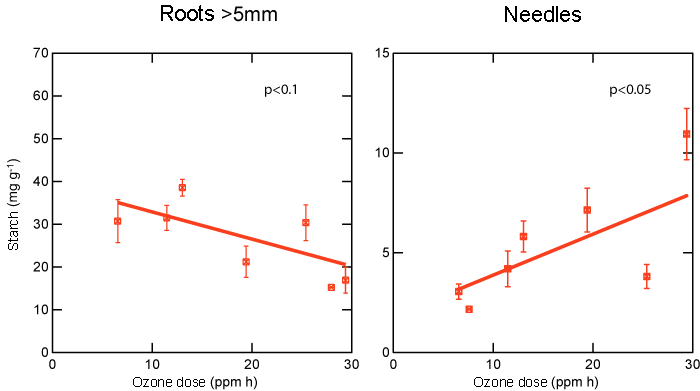
With increasing ozone flux in the fumigation experiment, starch accumulation
in young spruce trees decreased in roots (left) and increased in needles (right).
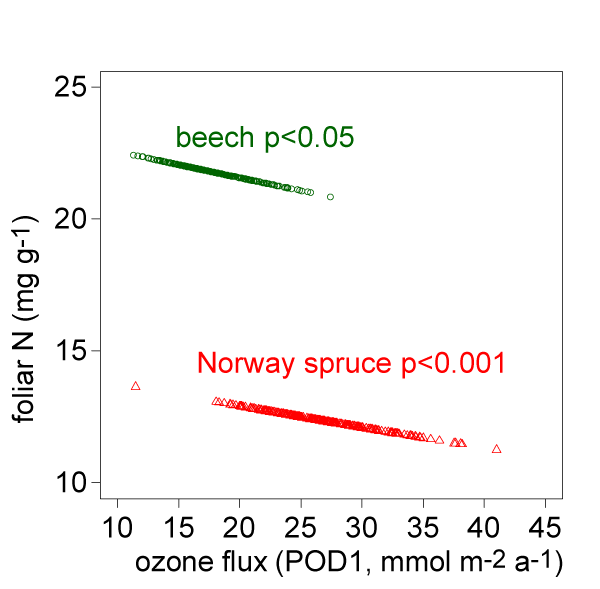
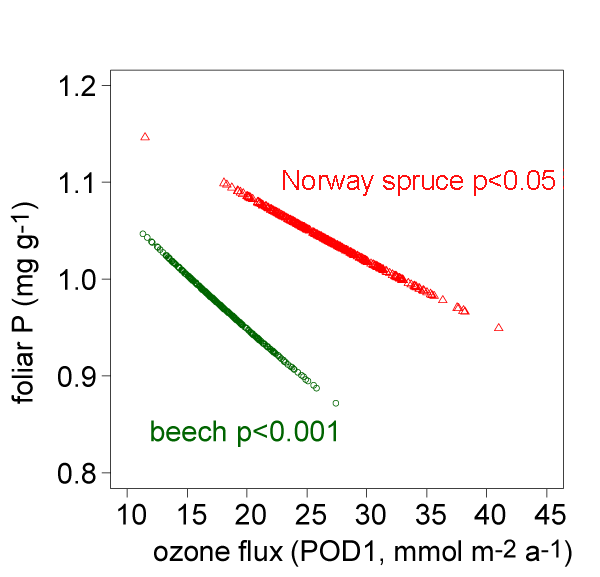
The relationship between ozone flux (mean over the years 1991-2011) and foliar nitrogen and
phosphorus concentrations in beech and spruce.
Interestingly, sucking insects benefit from increased ozone flux. They happily feed on the sugars from photosynthesis that are not allocated to the roots. Therefore, an increased infestation of aphids can be observed.

